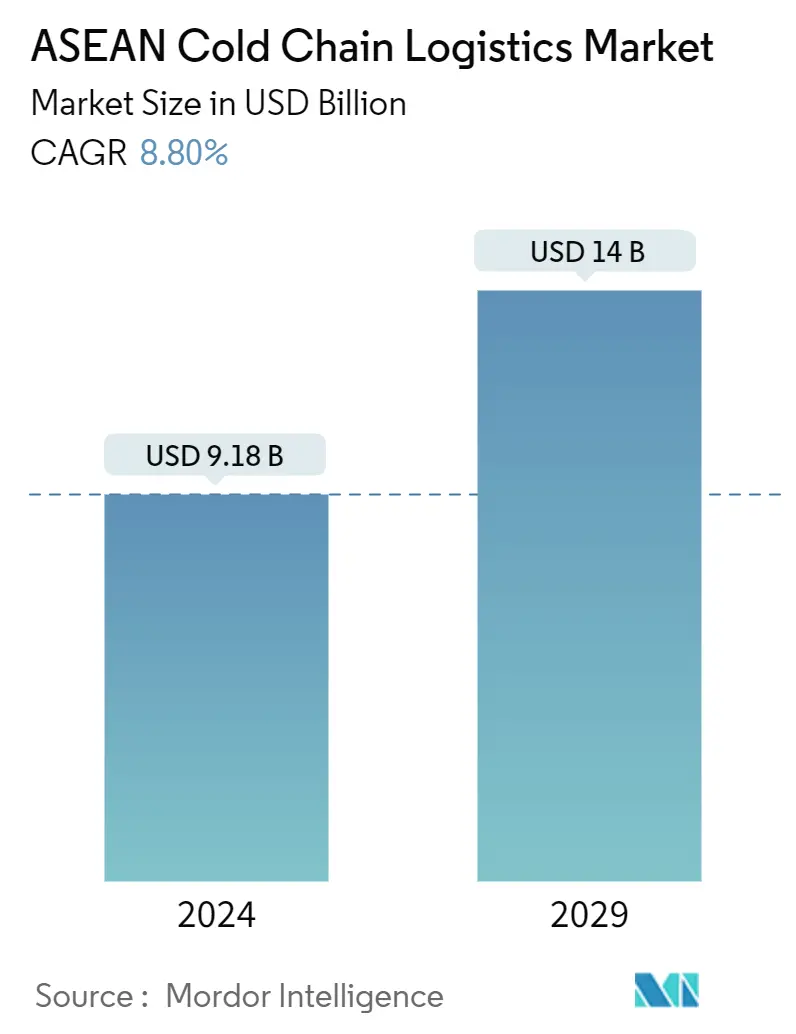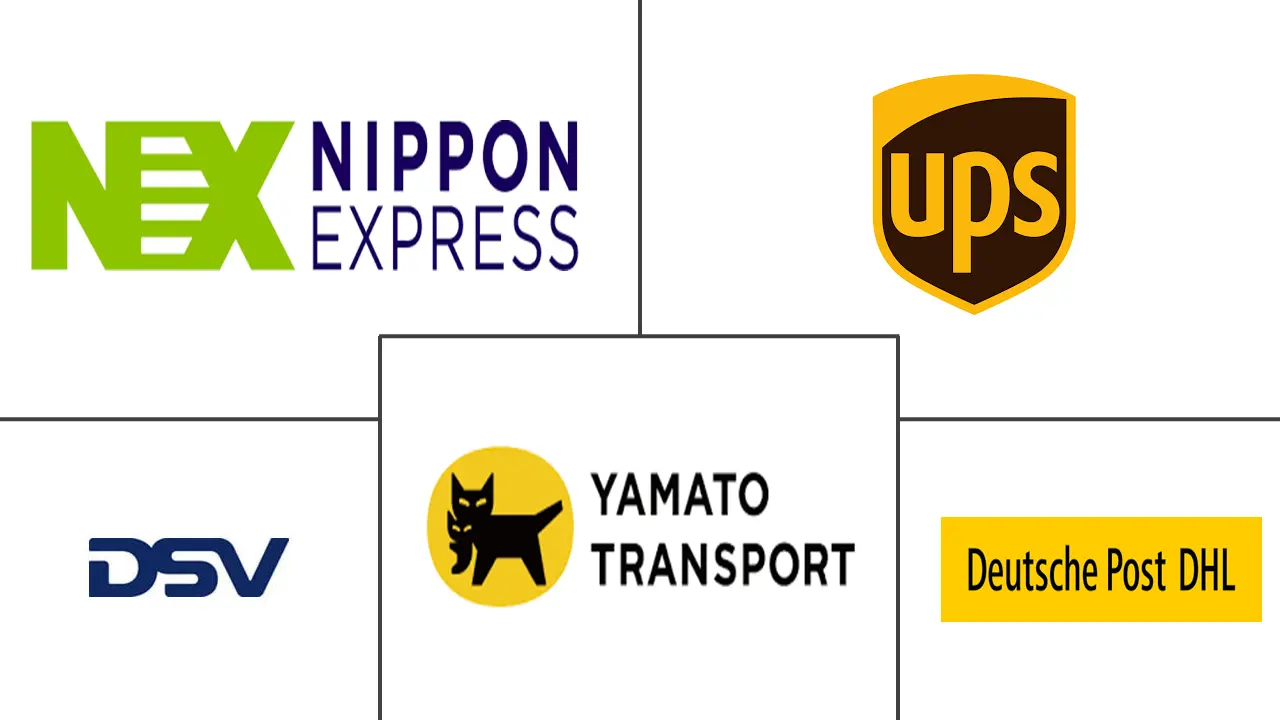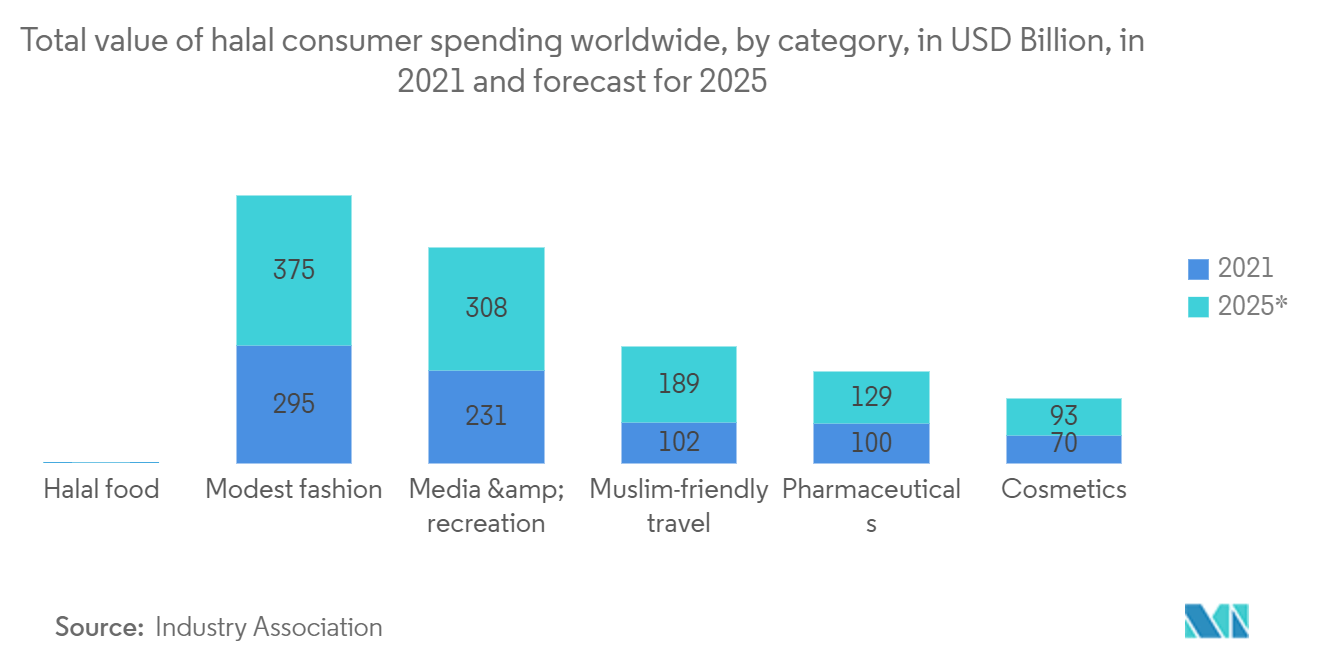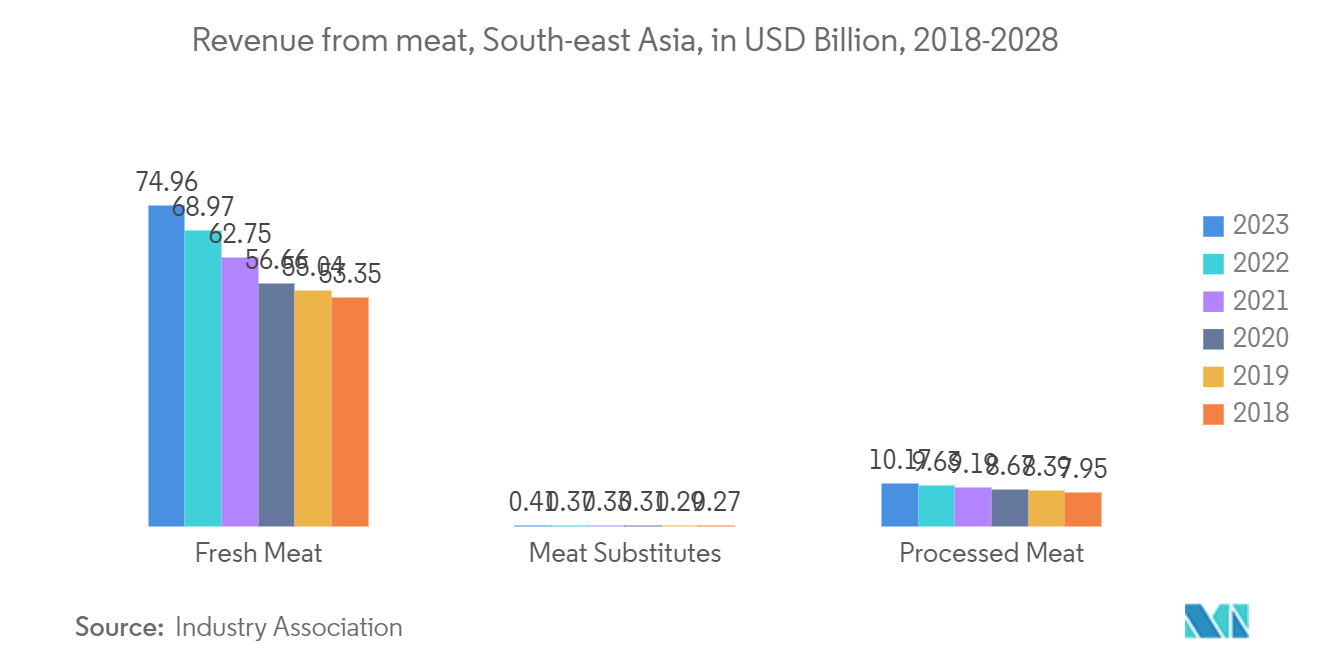ASEAN Cold Chain Logistics Market Size

| Study Period | 2020-2029 |
| Base Year For Estimation | 2023 |
| Market Size (2024) | USD 9.18 Billion |
| Market Size (2029) | USD 14 Billion |
| CAGR (2024 - 2029) | 8.80 % |
| Market Concentration | Low |
Major Players
*Disclaimer: Major Players sorted in no particular order |
ASEAN Cold Chain Logistics Market Analysis
The ASEAN Cold Chain Logistics Market size is estimated at USD 9.18 billion in 2024, and is expected to reach USD 14 billion by 2029, growing at a CAGR of 8.80% during the forecast period (2024-2029).
- The growing urban population and changing consumer perception have boosted refrigerated storage and transport demand. The market for refrigerated/frozen products is rapidly growing in Southeast Asia.
- The distribution of food products is rapidly shifting from traditional markets toward supermarkets and convenience stores. Refrigerated and frozen products are easier to procure, as major distributors offer shipping via insulated trucks.
- The quality of local cold-chain services varies widely. Food products have been damaged due to the lack of refrigeration. It is estimated that 90% of Southeast Asia's food waste is created during transport.
- Indian cold chain business is still in its early stages, it is one of the most promising industries in the cold chain warehousing and logistics industry.
- By 2027, India will have the world's fifth-largest economy. Investment in India's supply chain infrastructure is likely to increase year on year since it is a well-established, important player in the global market.
- Fortunately, the Indian government is a driving factor in the development of the cold chain industry, encouraging private participation through a variety of subsidy programs and incentives. The Ministry of Food Processing Industries (MoFPI) has initiated a cold chain, value addition, and preservation infrastructure program.
- Rising income levels in ASEAN countries and lifestyle changes are key factors for the growth of meat consumption and production in these regions. Indonesia and Vietnam are mainly driving the growth.
ASEAN Cold Chain Logistics Market Trends
Hallal Food is offering traction to the market
- In recent years, global brands have begun to focus on the Muslim economy to capitalize on rising purchasing power and shifting consumer spending priorities. Around 260 million Muslims live in the ASEAN region, most of whom live in Indonesia, Malaysia, Thailand, the Philippines, Singapore, Myanmar, and Brunei. The number of halal lifestyle events and campaigns held across the region in the last decade stimulates interest in Islamic travel, foods, fashion, and cosmetics.
- SPC Group, a major South Korean food company, intends to grow into Malaysia to capture a portion of the USD 2 trillion worldwide halal food industry. In Johor, a Malaysian state bordering Singapore, SPC Group announced plans to invest 40 billion won (about USD 30 million) in the construction of a halal-certified factory. According to South Korean media, the facility will have a route to send goods throughout Southeast Asia and into the Middle East thanks to the location's ports.
- Since most halal food is meat products, they need to be stored in cold chain warehouses that are Halal-certified by the respective Governments. In recent times, several policies aimed at developing the halal industry have been demonstrated by the government, including the establishment of a Special Economic Zone (KEK) for the industry.
- In addition, the collaboration between the National Committee for Sharia Economics and Finance (KNEKS) and companies such as Unilever Indonesia is expected to boost the country's halal industry. The Malaysian government is also making many advancements to become a global market leader in the halal market. The halal industry's master plan and halal park are the recent advancements made by the government. All these halal initiatives are driving the cold chain Logistics in ASEAN countries.

Increase in Meat Consumption Propelling Cold Chain Logistics in ASEAN Countries
- Southeast Asia's expanding population and increasing incomes, urbanization, and retail sectors are contributing to rising meat consumption and growing imports of feedstuffs. The five key emerging markets within the region are Indonesia, Malaysia, the Philippines, Thailand, and Vietnam.
- In recent years, meat consumption has also increased, although fish and seafood are the largest meat sources consumed and produced and are partially responsible for feedstuffs demand. Every Southeast Asian country has different meat preferences, as reflected by their levels of consumption and production.
- Malaysia has a sizable production apparatus in the poultry sector, which has the best production values among these Southeast Asian nations.
- The increasing demand for halal food products in ASEAN countries can be attributed to various factors. One of the key factors is the growing Muslim population in the region. As more people adhere to Islamic dietary practices, the demand for halal-certified food products has increased.
- Moreover, there has been a rise in awareness and consciousness among consumers regarding the source and preparation of their food. Many people, not just Muslims, are opting for halal-certified products as they perceive them to be of higher quality, more hygienic, and safer to consume.
- The ASEAN region has also witnessed a significant increase in tourism, including visitors from predominantly Muslim countries. These tourists seek halal food options during their travels, creating a demand for halal-certified restaurants and food products.
- To cater to this growing demand, businesses in ASEAN countries have been actively pursuing halal certification for their food products. Halal certification ensures that the products meet the required standards and are prepared in accordance with Islamic dietary laws. This certification assures consumers and helps businesses tap into the lucrative halal market.

ASEAN Cold Chain Logistics Industry Overview
The ASEAN cold chain logistics market's landscape is fragmented in nature, with a mix of global and local players. Small- and medium-sized local players still serve the market with small fleets and storage spaces. Some of the countries, like Singapore, have a strong presence of global players, like DHL and Nippon Express. Additionally, global players are investing in the market and acquiring local companies to increase their footprint in the region.
Furthermore, Japanese logistics companies strengthen their activities in the ASEAN region by setting up bases of land transportation in ASEAN countries for each country within the manufacturing and distribution industries, thereby pushing the construction of a supply chain. The companies are also involved in developing the cold chain and actively investing in logistics related to fruits and vegetables, flowers, cosmetics, and consumer goods.
ASEAN Cold Chain Logistics Market Leaders
-
Nippon Express
-
United Parcel Service of America
-
Deutsche Post DHL
-
Yamato Transport Co. Ltd
-
DSV Agility Logistics
*Disclaimer: Major Players sorted in no particular order

ASEAN Cold Chain Logistics Market News
- November 2023: The YCH Group disclosed strategic alliances with Shanghai Shine-link International Logistics and New Land-Sea Corridor Operation Co., Ltd, providing advantages for Chinese companies seeking expansion into the ASEAN market.
- September 2023: Expanding beyond its existing terminal business, DP World aimed to enhance its logistical and supply chain expertise in Southeast Asia.
ASEAN Cold Chain Logistics Market Report - Table of Contents
1. INTRODUCTION
- 1.1 Study Assumptions and Market Definition
- 1.2 Scope of the Market
2. RESEARCH METHODOLOGY
- 2.1 Analysis Methodology
- 2.2 Research Phases
3. EXECUTIVE SUMMARY
4. MARKET INSIGHTS
- 4.1 Current Market Scenario
-
4.2 Market Dynamics
- 4.2.1 Drivers
- 4.2.1.1 Increasing demand for cold chain logistics
- 4.2.1.2 Expansion of international trade in the region
- 4.2.2 Restraints
- 4.2.2.1 Lack of proper infrastructure and facilities
- 4.2.2.2 High cost associated to cold chain logistics
- 4.2.3 Opportunities
- 4.2.3.1 Growing demand for perishable goods
- 4.2.3.2 Technological advancements driving the market
- 4.3 Technological Trends and Automation in Cold Storage Facilities
- 4.4 Government Regulations and Initiatives
- 4.5 Review and Commentary on Role of Japan in the ASEAN Cold Chain Industry
- 4.6 Insights into Industry Value Chain
-
4.7 Industry Attractiveness - Porter's Five Forces Analysis
- 4.7.1 Threat of New Entrants
- 4.7.2 Bargaining Power of Buyers/Consumers
- 4.7.3 Bargaining Power of Suppliers
- 4.7.4 Threat of Substitute Products
- 4.7.5 Intensity of Competitive Rivalry
- 4.8 Impact of Emission Standards and Regulations in the Cold Chain Industry
- 4.9 Insights into Refrigerants and Packaging Materials Used in Refrigerated Warehouses
- 4.10 Insights into Halal Standards and Certifications in Indonesia and Malaysia
- 4.11 Insights into Ambient/Temperature-controlled Storage
- 4.12 Impact of COVID-19 on the Market
5. MARKET SEGMENTATION
-
5.1 By Service
- 5.1.1 Storage
- 5.1.2 Transportation
- 5.1.3 Value-added Services (Blast Freezing, Labeling, Inventory Management, etc.)
-
5.2 By Temperature
- 5.2.1 Ambient
- 5.2.2 Chilled
- 5.2.3 Frozen
-
5.3 By Application
- 5.3.1 Horticulture (Fresh Fruits and Vegetables)
- 5.3.2 Dairy Products (Milk, Ice-cream, Butter, etc.)
- 5.3.3 Meats and Fish
- 5.3.4 Processed Food Products
- 5.3.5 Pharma, Life Sciences, and Chemicals
- 5.3.6 Other Applications
-
5.4 By Geography
- 5.4.1 Singapore
- 5.4.2 Thailand
- 5.4.3 Vietnam
- 5.4.4 Indonesia
- 5.4.5 Malaysia
- 5.4.6 Philippines
- 5.4.7 Rest of ASEAN
6. COMPETITVE LANDSCAPE
- 6.1 Market Concentration Overview
-
6.2 Company Profiles
- 6.2.1 Nippon Express
- 6.2.2 United Parcel Service of America
- 6.2.3 Deutsche Post DHL
- 6.2.4 Yamato Transport Co. Ltd
- 6.2.5 DSV Agility Logistics
- 6.2.6 NYK (Yusen Logitics & TASCO)
- 6.2.7 Tiong Nam Logistics
- 6.2.8 Sinchai Cold Storage
- 6.2.9 Jentec Storage Inc.
- 6.2.10 JWD Logistics
- 6.2.11 KOSPA
- 6.2.12 PT. Pluit Cold Storage
- 6.2.13 PT. Wahana Cold Storage
- 6.2.14 Havi Logistics
- 6.2.15 Royal Cargo
- 6.2.16 Thai Max Co. Ltd
- 6.2.17 MGM Bosco*
- *List Not Exhaustive
7. FUTURE OF THE MARKET
8. KEY VENDORS AND SUPPLIERS
- 8.1 STORAGE EQUIPMENT MANUFACTURERS
- 8.2 CARRIER MANUFACTURERS
- 8.3 TECHNOLOGY PROVIDERS
9. APPENDIX
- 9.1 Annual Statistics on Refrigerated Storage Facilities
- 9.2 Import and Export Trade Data of Frozen Food Products
- 9.3 Insights into Regulatory Framework on Food Transportation and Storage in Key Countries
- 9.4 Insights into the Food and Beverage Sector in Southeast Asia
ASEAN Cold Chain Logistics Industry Segmentation
Cold chain refers to temperature-controlled logistics procedures. A complete background analysis of the ASEAN Cold Chain Logistics Market, including the assessment of the economy and contribution of sectors in the economy, market overview, market size estimation for key segments, and emerging trends in the market segments, market dynamics, and geographical trends, and COVID-19 impact is included in the report.
The ASEAN cold chain logistics market is segmented by service, temperature, and geography. By service, the market is segmented by storage, transportation, and value-added service. By temperature, the market is segmented into ambient, chilled, and frozen. By application, the market is segmented into horticulture, dairy products, meats and fish, processed food products, pharma, life sciences, chemicals, and other applications, and by geography, the market is segmented by Singapore, Thailand, Vietnam, Indonesia, Malaysia, Philippines and Rest of ASEAN.
The report offers market size and forecasts for the ASEAN cold chain logistics market in value (USD) for all the above segments.
| By Service | Storage |
| Transportation | |
| Value-added Services (Blast Freezing, Labeling, Inventory Management, etc.) | |
| By Temperature | Ambient |
| Chilled | |
| Frozen | |
| By Application | Horticulture (Fresh Fruits and Vegetables) |
| Dairy Products (Milk, Ice-cream, Butter, etc.) | |
| Meats and Fish | |
| Processed Food Products | |
| Pharma, Life Sciences, and Chemicals | |
| Other Applications | |
| By Geography | Singapore |
| Thailand | |
| Vietnam | |
| Indonesia | |
| Malaysia | |
| Philippines | |
| Rest of ASEAN |
ASEAN Cold Chain Logistics Market Research FAQs
How big is the ASEAN Cold Chain Logistics Market?
The ASEAN Cold Chain Logistics Market size is expected to reach USD 9.18 billion in 2024 and grow at a CAGR of 8.80% to reach USD 14 billion by 2029.
What is the current ASEAN Cold Chain Logistics Market size?
In 2024, the ASEAN Cold Chain Logistics Market size is expected to reach USD 9.18 billion.
Who are the key players in ASEAN Cold Chain Logistics Market?
Nippon Express, United Parcel Service of America, Deutsche Post DHL, Yamato Transport Co. Ltd and DSV Agility Logistics are the major companies operating in the ASEAN Cold Chain Logistics Market.
What years does this ASEAN Cold Chain Logistics Market cover, and what was the market size in 2023?
In 2023, the ASEAN Cold Chain Logistics Market size was estimated at USD 8.37 billion. The report covers the ASEAN Cold Chain Logistics Market historical market size for years: 2020, 2021, 2022 and 2023. The report also forecasts the ASEAN Cold Chain Logistics Market size for years: 2024, 2025, 2026, 2027, 2028 and 2029.
What are the key segments of the ASEAN Cold Chain Logistics Market?
The key segments of the ASEAN Cold Chain Logistics Market are a) Service Type: Refrigerated Storage and Refrigerated Transport b) Temperature: Chilled and Frozen c) End User: Food and Beverages, Pharmaceuticals, Chemicals and others
ASEAN Cold Chain Logistics Industry Report
The Global Digital Printing Market is experiencing significant growth, driven by advancements in digital printing technologies and increasing demand across various sectors, particularly in packaging and textiles. This growth is further bolstered by innovations in inkjet printheads and solvent inks, which enhance the industry's ability to provide sustainable, cost-effective, and high-quality solutions on diverse substrates. The Asia-Pacific region is leading this expansion due to its strong textile manufacturing base and rapid adoption of digital printing technologies. Additionally, the rising consumer preference for customized and personalized products is propelling the market forward.
Digital printing is transforming business printing strategies by offering faster turnaround times, reduced waste, and on-demand printing capabilities, aligning perfectly with the dynamic needs of modern consumers and industries. Mordor Intelligence™ Industry Reports provide comprehensive statistics on the digital printing market share, size, revenue growth rate, and a forecast outlook, available as a free report PDF download. This analysis highlights the pivotal role of digital printing technologies in shaping the future of the digital printing industry.
The industry analysis reveals that the market size and market share are expanding, driven by industry trends such as the demand for personalized packaging and sustainable printing solutions. The market growth is supported by a detailed market forecast, which outlines the expected market value and market segmentation across different applications and regions. The industry reports and market reports provide valuable insights into the largest companies in the sector, offering a thorough market overview and market review.
For businesses seeking detailed industry information and market data, the report example and profile PDF offer an in-depth look at the market leaders and their strategies. The industry outlook and market outlook sections provide predictions on future industry sales and market growth, supported by robust industry statistics and market predictions. The research companies involved in the study have compiled extensive industry research, ensuring that the market segmentation and market value are accurately represented.
In conclusion, the digital printing industry is poised for continued growth, driven by technological advancements and evolving consumer preferences. The comprehensive industry research and market analysis provided in the Mordor Intelligence™ reports offer valuable insights for stakeholders looking to navigate this dynamic market.



